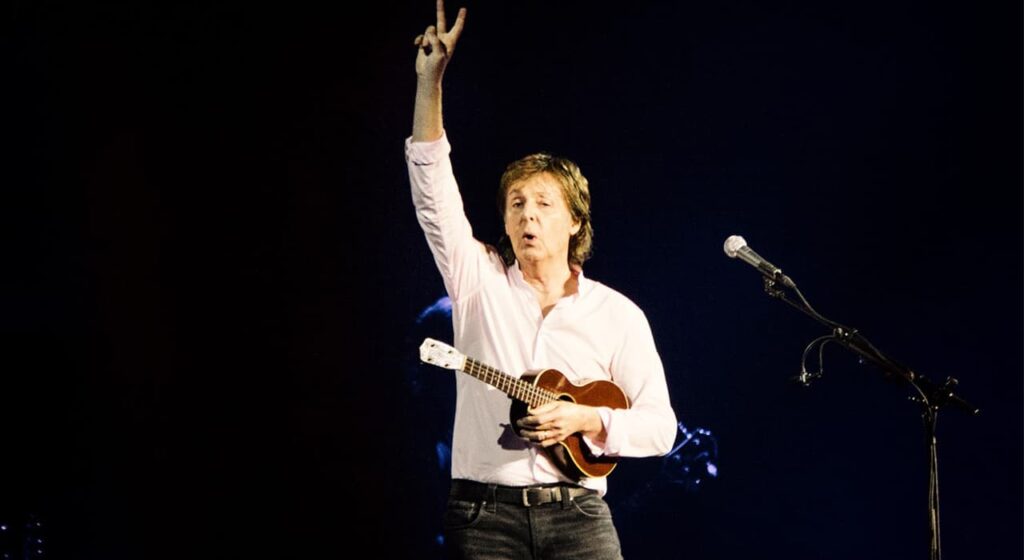There probably isn’t a single person in the civilized world who hasn’t heard of The Beatles at least once.
Music historians, critics and music lovers are still trying to unravel the phenomenon of the four.
Is it even possible to explain such a massive popularity and a truly popular love to the British musicians, who turned the world upside down in the 1960s.
At the origins of The Beatles
It’s impossible to even imagine the culture of the past century without the legendary four of The Beatles. For at least 20 years, they were the role models not just for music bands and performers but for entire generations of young people. It was they who succeeded in instilling love and peace into the war-torn souls of Europeans with their creativity. It is difficult to overestimate the importance of The Beatles in world culture. Could any of the band members even suppose what heights they would climb when they got acquainted with each other and decided to create together.
And everything started way back in 1957. At that time a very young Paul McCartney met a little older John Lennon. At the age of 17, Lennon was the leader of the Quarrymen and was a fan of rock and roll. The band followed the skiffle style of rock ‘n’ roll, which was the British model of rock ‘n’ roll. The BeatlesPaul impressed the new acquaintance – he knew the chords and lyrics of all the rock and roll hits, could play the trumpet and was trained to play the piano. A few months later they began performing together, joined by one of Paul McCartney’s friends, George Harrison. Thus the permanent basis of the future band The Beatles appeared, and later bassist Stuart Sutcliffe, a classmate of John’s at art college, joined them.
In Search of a Name
After several appearances at city events the young people decided that they had already become a cohesive group of like-minded people and began to develop their musical skills and abilities. Of course there were no real concerts yet, they just had to dream about recording a record, but it didn’t bother the ambitious guys in the slightest.
The musicians began to actively make connections in order to get into the club life of Liverpool and start performing live. They didn’t miss any more or less significant creative competitions, but even that didn’t bring the expected results. And then the guys thought about changing the band’s name. First the Quarrymen became Johnny and the Moondogs, then the Silver Belleys, and finally just The Beatles. The Beatles said that it was a joint idea of John and Stuart. They wanted to invent a word that would have a double meaning. They used beetles, and then they changed one letter in it, and got beatles. It sounded the same, but the root beat meant beat music.
It is impossible to say unequivocally that the name change influenced the activity of the band, but soon after that the musicians began to receive offers for gigs. At the beginning of 1960 the band even went on a small tour in Scotland. They just needed to break out of the row of numerous unknown bands in Liverpool that were performing similar music.
With a new image into a new life
In the summer of 1960 a new stage in the creative process of The Beatles began – the band was invited to play in Hamburg, and this meant that a great chance to show themselves to Europe had opened up. Just before the German tour, the long search for a drummer was successful, and Pete Best was accepted into the band. The trip to Germany and the first performances abroad were a real test of the band’s strength. The Beatles spent seven months in Hamburg, where they were welcomed first by the Indra Club and then by the Kaiserkeller regulars.
Their extremely busy schedule gave them no time for relaxation, their club gigs were non-stop, one band after another, and they had to constantly improve themselves in order not to put themselves at a disgrace in front of the German public. On stage they performed jazz, blues, pop and even folk songs with a rock’n’roll twist. It was the German tour that helped the performers sharpen their skills, which was immediately noticed by music lovers in their hometown.
Another event in the history of The Beatles happened in the glorious port city. There the musicians met a couple of students of the local art college – Klaus Forman and Astrid Kircherr. The girls soon developed a romantic relationship with Stuart Sutcliffe, she also took the band’s first professional photo session in a Hamburg park and during their next tour in 1961 she suggested that the musicians change their image. The makeover involved creating new hairstyles with hair pulled back over the forehead and ears, and replacing concert suits with collarless and lapel collar jackets, as promoted by the famous Pierre Cardin. Thus, Astrid actually became their first real image-maker.
The Brian Epstein era.
In Liverpool the band started regular gigs at the Cavern club and already claimed a leading position in the city. The foursome’s main competitors were Rory Storm and the Hurricanes. Its members also came to Hamburg for a tour, and this is where the Beatles saw their drummer Ringo Starr, who later replaced Sutcliffe, who had left the band.
During their second long tour in Germany, The Beatles made their first professional recording. Then they accompanied Tony Sheridan and got permission to record some of their songs.
